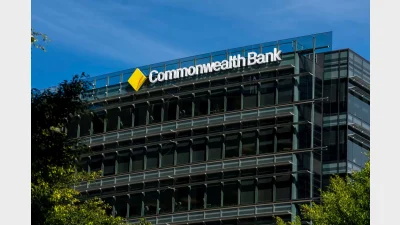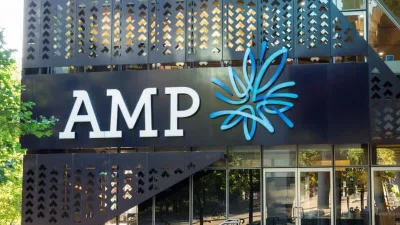CBA says market overestimates rate cut odds, dismisses 50-50 narrative



CBA forecasts an 80 per cent chance of a 25 basis point rate cut next week, citing softer inflation data, while acknowledging that future policy decisions depend on incoming economic indicators.
Ahead of the Reserve Bank of Australia’s (RBA) monetary policy decision next week, market pricing suggests a 93 per cent chance of a rate cut, though CBA believes this is slightly overstated, with its own estimate closer to 80 per cent.
In a market note on Monday, the bank’s head of Australian economics, Gareth Aird, emphasised that he also doesn’t “buy into the narrative” suggesting the odds are closer to a 50-50 chance, as some commentators have suggested.
“We are quite confident the RBA will start the process of removing some restrictiveness at the February board meeting,” the economist said.
CBA, which has consistently predicted February as the first rate cut since October, expects a 25 basis point reduction, bringing the cash rate down to 4.10 per cent.
Its conviction is partly based on recent data from the Australian Bureau of Statistics, which revealed a sizeable reduction in both the headline and trimmed mean consumer price index (CPI) prints for 4Q24.
Namely, CPI rose 0.2 per cent in the December quarter and 2.4 per cent annually, while trimmed mean inflation – which removes government subsidies from the equation – came in at 3.2 per cent, down from 3.6 per cent in the September quarter.
“This was a touch below the market median forecast and more materially below the RBA’s expectations from the November Statement on Monetary Policy (SMP). Both outcomes on the Q4 24 headline and trimmed mean CPI were in line with our forecast, which underpinned our view that the RBA would commence normalising the cash rate in February,” Aird said.
“Recent wages outcomes have also undershot relative to the RBA’s expectations in the November SMP.
“The combination of both softer inflation and wages data will give the board more confidence that underlying inflation is returning sustainably to the mid-point of the RBA’s target band.”
However, labour market data surprised in the other direction over 4Q24, with the rate defying expectations and continuing to track sideways at 4 per cent. Both CBA and the RBA had expected the labour market to loosen, with the latter forecasting a rate of 4.3 per cent in the December quarter.
While Aird explained the central bank doesn’t need to rush to normalise the cash rate, he noted the labour market data also doesn’t preclude the RBA from cutting rates.
“The unemployment rate is a lagging indicator. And we still expect it to drift a little higher over H1 25, as we anticipate the RBA will also forecast in the February SMP,” Aird said.
RBA to remain noncommittal
In the event that the RBA does cut the cash rate next week, Aird said the board is unlikely to provide any forward guidance on the likely timing or pace of further monetary policy easing.
“The RBA’s communication strategy to date has largely erred on the side of caution. And in general the board has shied away from providing any forward guidance over the recent past,” he said.
“We expect the board will continue with this modus operandi in February.”
Instead of setting a timeline, the RBA, he said, will rely on incoming economic data to guide its decisions.
While the CBA expects the RBA to cut the cash rate by 25 bps in each quarter over 2025, the economist conceded that the end destination for the RBA is unsure given uncertainty around where the neutral interest rate sits.
“The RBA will not race to cut rates to its point estimate of neutral unless the economic data or economic outlook deteriorates,” Aird said, adding “the low level of the unemployment rate means the RBA can move slowly in normalising the cash rate.”
Aird is also entertaining the possibility of an April rate cut, if the next labour market data is favourable.
“The January labour force survey prints two days after the February board decision. And the February labour force survey is published on 20 March. That means the board will have visibility on two monthly labour force surveys between the February and April board meetings,” Aird said.
“We think that it would require two labour force surveys of clear labour market loosening (i.e. the unemployment rate to trend up over the two-month period by ~0.2 percentage points to 4.2 per cent) for the board to deliver back-to-back rate cuts.”
Last week, one of the most hardline economists reversed his stance and announced that he considers a rate cut in February “likely”.
Namely, HSBC’s chief economist, Paul Bloxham, who had maintained that a rate cut wouldn’t occur until at least the second quarter of this year, reconsidered his position based on lower-than-expected inflation data and escalating global trade tensions.
“We pull forward our first RBA cut from Q2 to February,” Bloxham said in a market note.
Though still somewhat conservative about the timing of rate cuts, Bloxham aligns with the views of the big four banks, most of which recently adjusted their expectations.
Recommended for you
AMP’s new chair has used his inaugural AGM address to call for policy reform on the “decumulation” phase of superannuation and position AMP as a key player in addressing the challenge.
Reserve Bank governor Michele Bullock has quashed hopes of an out-of-schedule rate cut, telling an event in Sydney that it remains too early to determine the trajectory of interest rates as the RBA grapples with growing global economic volatility.
Australian super fund leaders have flagged AI as a major force reshaping the global economy and investment landscape, stressing the importance of responsible use and long-term thinking to harness its full potential.
The era of “US exceptionalism” may be drawing to a close, with widespread implications for global markets, currencies, and interest rates, but the message from the super sector is funds remain well-positioned to weather the volatility.












